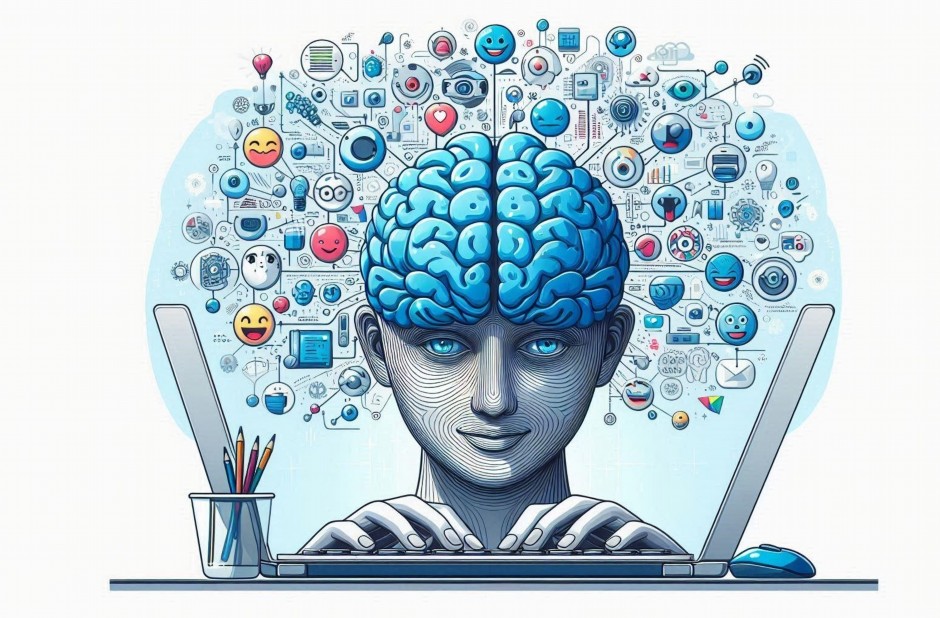In recent years, there has been a significant advancement in the field of Artificial Intelligence (AI) and Augmented Reality (AR). These technologies have become increasingly popular and have the potential to enhance virtual experiences in various fields such as gaming, education, healthcare, and...
Computer Brain Learned to Read Thoughts by Facial Expressions

In a groundbreaking advancement that sounds like science fiction, researchers have developed artificial intelligence systems capable of interpreting human thoughts and emotions by analyzing facial expressions with unprecedented accuracy. This revolutionary technology represents a significant leap forward in the field of affective computing and human-computer interaction.
The Science Behind Facial Expression Recognition
The human face contains over 40 muscles that work together to create thousands of different expressions. These micro-expressions, often lasting mere fractions of a second, can reveal hidden emotions and thoughts that people might not even be consciously aware of. Advanced AI algorithms now analyze these subtle facial movements to decode the complex language of human emotion.
Key Technologies Involved
The breakthrough relies on several cutting-edge technologies working in harmony:
- Computer Vision: High-resolution cameras capture facial movements with extreme precision
- Machine Learning: Neural networks trained on millions of facial expression samples
- Pattern Recognition: Algorithms identify subtle patterns invisible to the human eye
- Real-time Processing: Instantaneous analysis and interpretation of facial data
How the System Works
The AI system operates through a sophisticated multi-step process. First, specialized cameras capture high-definition images or video of a person's face. The computer then maps key facial landmarks, identifying the position and movement of features like eyebrows, eyes, nose, mouth, and jaw.
The Analysis Process
Once facial landmarks are mapped, the system analyzes micro-movements and changes in facial geometry. The AI compares these patterns against its vast database of emotional expressions, correlating specific muscle movements with particular thoughts or feelings. The technology can detect:
- Basic emotions like happiness, sadness, anger, and fear
- Complex emotional states such as confusion, contemplation, or skepticism
- Cognitive processes including concentration, decision-making, and memory recall
- Deceptive behaviors and truth-telling indicators

Real-World Applications
The potential applications for this technology span numerous industries and fields, promising to transform how we interact with machines and understand human behavior.
Healthcare and Mental Health
In medical settings, the technology could revolutionize patient care by providing healthcare professionals with objective measures of pain, discomfort, or emotional distress. Mental health practitioners could gain deeper insights into their patients' emotional states, leading to more accurate diagnoses and personalized treatment plans.
Education and Learning
Educational applications include adaptive learning systems that adjust difficulty based on student confusion or engagement levels. Teachers could receive real-time feedback about student comprehension, allowing for immediate instructional adjustments.
Security and Law Enforcement
Security applications range from detecting suspicious behavior in airports to assisting law enforcement during interrogations. The technology could identify potential threats or verify truthfulness with greater accuracy than traditional methods.
Challenges and Ethical Considerations
Despite its remarkable capabilities, the technology faces significant challenges. Cultural differences in expression, individual variations in facial structure, and the complexity of human emotion create obstacles for universal accuracy. Privacy concerns also loom large, as the ability to read thoughts raises questions about mental privacy and consent.
Future Developments
Researchers continue refining the technology, working to improve accuracy across diverse populations and reduce false positives. Future versions may incorporate additional biometric data such as voice patterns, body language, and physiological measurements to create even more comprehensive emotional intelligence systems.
As this technology evolves, it promises to bridge the gap between human and artificial intelligence, creating more intuitive and responsive computer systems that truly understand human needs and emotions.



